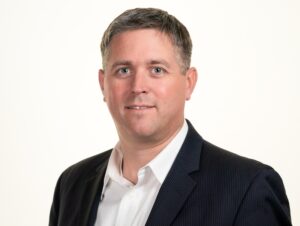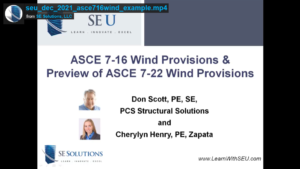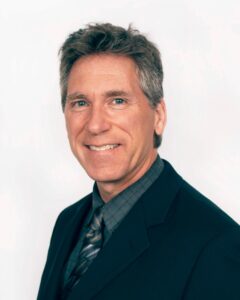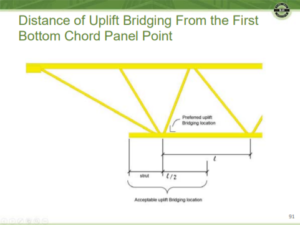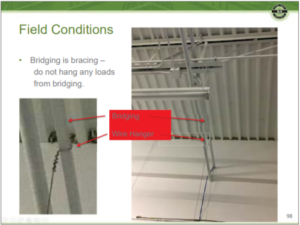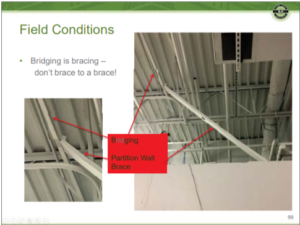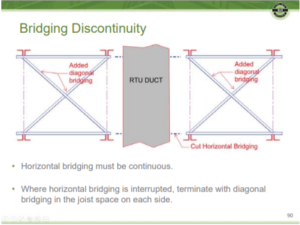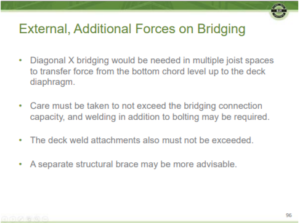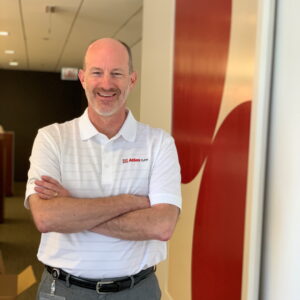In March 2022, SEU welcomed Matthew Rechtien, PE, Esq., from Walter P. Moore, to present 2022 Engineering Ethics Update: The Ethics of Competition. In prior years, Matt has designated Friends of Perryville Battlefield (https://www.friendsofperryville.org) for our SEU Speaker Inspires donation for the month and he has chosen to do the same in 2022.
Matt shared, “On October 8, 1862, nearly 8,000 Americans fell in the drought-parched Chaplin Hills of Kentucky during the Battle of Perryville. Perryville played a pivotal role in our nation’s most impactful event. Although the clash is oft-forgotten, those Americans should be remembered and that sacred ground, one of the most pristine civil war battlefields remaining, should be protected. The Friends of Perryville Battlefield is committed to both missions, which I am humbled to advance.”
Thank you, Matt, for helping structural engineers with your SEU session, and for your designation of Friends of Perryville Battlefield as our SEU Speaker Inspires Organization of the Month!
SEU began the SEU Speaker Inspires program in 2015 as a way to “pay it forward”, enabling our speakers to designate a charity/organization of their choice for SEU to make a donation to help improve our world.
Engineers are often more familiar with strength provisions for concrete slabs, but building codes require adequate strength and serviceability. Excessive cracking and sloping or bouncy floors can be a nuisance and render a building unusable for its intended purpose. Thus, engineers should be familiar with the available resources providing guidance for serviceability issues above and beyond the basic requirements in the building code.
In the February 2022 SEU Session, Dave Adams, PE, SE, from BWE, Inc., presented Serviceability for Concrete Slabs. Dave covered a variety of topics addressing serviceability of slabs including strategies for improving the performance of concrete, short- and long-term deflections, the influence of reinforcement on potential cracking, prestressed tendon layout, and the effects of floor vibrations.
Throughout the presentation, Dave offered resources to learn more about serviceability of concrete slabs and to find additional design examples for reference. Most of the presentation was based on guidelines in our usual Design Codes, such as 2018 International Building Code, ACI 318-14 Building Code Requirements for Structural Concrete, and ASCE/SEI 7-16 Minimum Design Loads and Associated Criteria for Buildings and Other Structures. But many other resources are available to provide further guidance for serviceability which tends to get less coverage in the main Design Codes.
Since mix design and placement can greatly affect the performance of concrete slabs, Dave noted that ACI 209R Prediction of Creep, Shrinkage, and Temperature Effects in Concrete Structures offers guidance for the practicing engineer on concrete mix designs and how to plan for serviceability concerns. ACI SP-20, Causes, Mechanisms, and Control of Cracking in Concrete is another useful document to prevent excessive short- or long-term cracks in concrete slabs along with 224R-01 Control of Cracking in Concrete Structures.
Two excellent resources that offer a detailed understanding of prestressed concrete member deflections are the PCI Design Handbook and Deflections of Prestressed Concrete Members from the ACI Journal Proceedings, V60, No.12, 1963. Also, Dave recognized the ACI Journal Proceedings V6, No, 6, from June 1963 Load-Balancing Method for Design and Analysis of Prestressed Concrete Structures by T.Y. Lin. This article is useful for learning more about determining acceptable tendon profiles for prestressed concrete and the load balancing method based on elastic prestressed concrete beam theory.
For vibration control of concrete slabs, engineers can refer to AISC Design Guide 11: Floor Vibrations Due to Human Activity and Design Guide for Vibrations of Reinforced Concrete Floor Systems from CRSI. Vibration issues are often subjective, but they can have important ramifications on the usefulness of concrete floors for a variety of activities.
Some of these resources are available free of charge, and others are available for purchase, but all of these materials are helpful to eliminate serviceability concerns in concrete slabs.
ASCE 7 wind maps have changed! While the changes to the maps alone are significant, there have been other changes within the provisions which will largely affect most of the country. Depending on your region of practice, the updates may have significant implications for new building construction. Are you aware of the most significant changes between ASCE 7-10 and ASCE 7-16?
In the December 2021 SEU session, Don Scott, PE, SE, from PCS Structural Solutions, and Cherylyn Henry, PE, from Zapata, presented ASCE 7-16 Wind Provisions (plus Updates). Don and Cherylyn explained the significant changes to the wind maps and provisions in ASCE 7-16 including the differences between ASCE 7-10 and 7-16 low-rise components and cladding roof pressures. They also covered the wind chapter changes between ASCE 7-16 and 7-22 including the tornado provisions.
Don gave an excellent visual demonstration of how significant the changes to the low-rose component and cladding roof pressures were between ASCE 7-10 and 7-16. Click below to watch a short 3 minute video to see some examples of how the roof zone areas and pressures have changed:
The above examples show the new effects of the ASCE 7-16 wind map changes including the decrease of wind speeds along the west coast, the unchanged wind speeds through the great plains and hurricane prone regions, as well as how the elevation factor can affect the wind pressures. Most significantly, the changes to the roof pressure coefficients are apparent due to the results of new testing and more data. Most of the country will experience some change to the component and cladding wind pressure updates in ASCE 7-16, as a result, so it’s important to be aware of the changes in the code.
28 Mar 2022
ASCE 7 Hazard Tool
Have you been using the ASCE 7 Hazard tool to look up important site-specific information for your building projects? Are you aware that the new ASCE 7-22 provisions are now included in the Hazard Tool, including Tornado speeds?
During the December 2021 SEU session ASCE 7-16 Wind Provisions (plus Updates), Cherylyn Henry noted that the ASCE 7 Hazard Tool now includes the ASCE 7-22 provisions and users can now access 3 editions of ASCE 7 site specific information for their projects. This tool is FREE for all users.
According to the ASCE 7 Hazard Tool website, the following site-specific data is provided in both customary and SI units for ASCE 7-10, 7-16 and 7-22:
- Three-second gust wind speeds at 33 feet above ground for Exposure Category C, including identification of hurricane-prone and wind-borne debris regions.
- Seismic coefficients plus the seismic design category.
- Radial ice thickness with concurrent 3-second gust speeds for 50-year mean recurrence interval and temperature concurrent with ice thickness due to freezing rain.
- Ground snow load, 20-year MRI value, and Winter Wind parameter (W2).
- Median 15-minute and 60-minute duration rainfall intensities for 100-year mean recurrence interval.
- Flood zone and static base flood elevation.
- Tornado speeds.
- Whether the site is in a mapped tsunami design zone.
The ASCE 7 Hazard Tool eliminates having to interpolate from contour lines on a map and saves time by noting when certain parameters need not be considered for specific risk categories. This FREE tool is especially helpful to determine differences between editions of ASCE 7.
28 Mar 2022
Resources for HSS Bolted Connections
HSS connections tend to be heavy on welded applications rather than field bolted options. However, there are many viable options for using bolted connections in place of historically welded connections. How many resources do you have in your arsenal for the use of bolted connections in your HSS designs?
In the January 2022 SEU session, Brad Fletcher, SE, from Atlas Tube, presented HSS Bolted Connections. Brad identified options for bolted field connections between HSS and reviewed how the limit states for HSS bolted connections are similar to other bolted connections. Brad also suggested several helpful resources for HSS bolted connections for the practicing engineer.
Most structural engineers are familiar with AISC 360 and Brad noted Chapter J contain the limit states necessary for HSS bolted connections. Chapter K covers additional requirements for welded HSS connections. AISC also has published Design Guide #24 Hollow Structural Section Connections which contains guidance for bolted and welded connections, and an updated version is due out later this year.
Brad also suggested the CISC Design Guide 1997 which reads more like a textbook for the design of HSS connections. While the code references are out-of-date at this point, the principles discussed are still valid and useful. This resource is no longer in print, however you can download a PDF version at the CISC website by clicking here.
The CIDECT Design Guides also contain useful design examples and may address more specific concerns such as stability or fatigue of HSS members and connections. These resources contain mostly references to the EURO design codes, however the content still translates for use in North America.
Additional guidance can be found at the Steel Tube Institute’s website which includes the popular HSS CONNEX Online. HSS CONNEX is a program that performs code checks for welded HSS connections. Also available are design spreadsheets which can help engineers efficiently design their HSS connections. Many additional design manuals and reference articles can be found in their Resource Library, including their HSS Design Manual Volume 3: Connections at HSS Members which has been updated to the 2016 code.
Many of these resources are available for FREE download or can be purchased at a discounted rate with membership to the various organizations that publish them.
In February 2022, SEU welcomed Dave Adams, PE, SE, from BWE, Inc., to present Serviceability of Concrete Slabs. Dave designated Engineers Without Borders (ewb-usa.org) for our SEU Speaker Inspires donation for the month.
Dave shared “Engineers Without Borders International provides amazing opportunities for volunteering professionals to help people around the world meet their basic human needs. This effort broadens our vision and appreciation for fellow human beings, which enhances the positive impact engineers make to the well-being of society.”
Thank you, Dave, for helping structural engineers with your SEU session, and for your designation of Engineers Without Borders as our SEU Speaker Inspires Organization of the Month!
SEU began the SEU Speaker Inspires program in 2015 as a way to “pay it forward”, enabling our speakers to designate a charity/organization of their choice for SEU to make a donation to help improve our world.
15 Feb 2022
Steel Joist Bridging FAQs Answered
Steel joist bridging plays an important role in the overall strength of a joist system. Bridging provides lateral stability during erection and when chords are not fully braced during the application of loads. However, conflicts are common when locating bridging on drawings, in the field, and during retrofits. How should engineers address or avoid these common occurrences?
In the November 2021 SEU Session, Tim Holterman, PE, SE, from Canam Steel, and Bruce Brothersen, PE, SE, from Vulcraft, representing the Steel Joist Institute, presented Bridging and Steel Joists (How it Works and What to Work Around). They covered the types and roles of bridging and the governing criteria for bridging spacing and sizing. Connection details, common conflicts and resolutions were also highlighted.
Tim and Bruce addressed many common pitfalls in regard to steel joist bridging and provided guidance for these problematic situations. Below are several frequently asked questions along with an explanatory graphic to solve these dilemmas.
How close is close enough to the first bottom chord panel point for the first row of uplift bridging?
Can I hang a supported ceiling from steel joist bridging?
Can I brace the top of a partition wall to steel joist bridging?
How should I address a bridging discontinuity for ductwork or other equipment?
Can an additional, external wind force be transferred through the joist bridging?
Bridging is bracing and it is essential to the structural integrity of the steel joist system. Engineers can ensure their joist system stays structurally sound by proper placement of bridging, as well as avoiding discontinuities or applying any additional loads to these slender braces.
14 Feb 2022
SE Solutions Provides Scholarships to 2 MSCE Structures Students from Purdue University (2022)
 SE Solutions was pleased to recently present scholarships to two Purdue University Structures students to help defray the cost of their education. Nichole Criner and Benjamin Wogen were the recipients of the awards. This is the tenth year that SE Solutions has offered the scholarships.
SE Solutions was pleased to recently present scholarships to two Purdue University Structures students to help defray the cost of their education. Nichole Criner and Benjamin Wogen were the recipients of the awards. This is the tenth year that SE Solutions has offered the scholarships.
Nichole Criner is from Grove City, OH and she became interested in civil engineering when doing a balsa wood bridge design/build project in high school. After working for a structural engineering design firm during her co-op rotations while attending University of Cincinati, she decided to pursue a degree in structural engineering. She received her Bachelor of Science in Civil Engineering in May 2021 from the University of Cincinnati and she plans to graduate with her MSCE from Purdue University in May 2023. She is currently researching the physical and cost implications of defects occurring during construction of concrete bridge decks. After graduation, she plans to begin her career back in Ohio.
Benjamin Wogen graduated with his bachelor’s degree in Civil Engineering with an emphasis in structures from Purdue University in 2021, and has continued into a master’s program. He plans to defend a thesis and graduate in the Spring of 2023. As an undergraduate, he had the opportunity to do research with RETHi, a NASA-funded research institute looking into new technologies for developing extra-terrestrial structures on Earth’s moon and Mars. He is continuing to assist this project in his graduate studies as an operations coordinator. His thesis work will involve leveraging machine learning and computer-vision capabilities to increase the efficiency and effectiveness of structural inspections. Additionally, he completed internships at several site-design and construction companies, including work on deep foundations and natural gas facilities. After graduating with his master’s degree, he is interested in working in the structural design industry where he can continue to develop a deeper understanding of buildings and other structures.
SE Solutions would like to congratulate each recipient and wish them future success in their fields of study as structural engineers.
In January 2022, SEU welcomed Brad Fletcher, SE from Atlas Tube, to present HSS Bolted Connections. Brad designated the American Red Cross (https://www.redcross.org/) for our SEU Speaker Inspires donation for the month.
Brad shared “With the recent devastation in the southern US from late fall storms and tornadoes, we are reminded how the climate is changing and how it could potentially directly affect all of us. It also reminds us how fragile life can be and there may be times we will need the assistance of others. I believe in supporting the American Red Cross as they will always be there to lend a hand to those that are affected by these natural disasters.”
Thank you, Brad, for helping structural engineers with your SEU session, and for your designation of the American Red Cross as our SEU Speaker Inspires Organization of the Month!
SEU began the SEU Speaker Inspires program in 2015 as a way to “pay it forward”, enabling our speakers to designate a charity/organization of their choice for SEU to make a donation to help improve our world.
As we start the new year, we’d like to thank our structural engineering community for partnering with us to support various causes to make the most impact. As 2021 concluded, SE Solutions was able to support Brooke’s Place in Indianapolis, Team Western Kentucky Tornado Relief Fund, Feeding America, Purdue University Civil Engineering, and Purdue University Bowen Structures Lab Student Advisory Council. Click on the links to the websites below to learn more about these important organizations.
Brooke’s Place in Indianapolis, IN (brookesplace.org) exists to serve youth who have experienced the loss of a loved one. Their mission statement is to provide support groups, therapy services and community education to empower children, teens, young adults, and their families to thrive in the midst of their grief. At Brooke’s Place, children learn to honor and cherish the loved ones that they carry in their heart. Through peer support groups and therapy services (individual/family counseling), children learn they are not alone. SE Solutions is proud to support an organization caring for vulnerable youth in Indianapolis.
Team Western Kentucky Tornado Relief Fund (TeamWKYReliefFund.ky.gov) was created in response to the devastating tornado and severe weather activity that occurred on the night of December 10, 2021. At more than 200 miles long, the storm event was the longest tornado track on record and the largest in Kentucky history and resulted in the deaths of more than 75 people. As the effort to rebuild these communities begins, SE Solutions is honored to provide some relief to the many people affected by these storms.
Feeding America (https://www.feedingamerica.org/) is the nation’s largest domestic hunger-relief organization—a powerful and efficient network of 200 food banks across the country. The hunger crisis in this country has reached new heights since the pandemic began. SE Solutions chose to support Feeding America during the COVID-19 pandemic as a way to support families who have been impacted by the economic crisis.
SE Solutions had been a long time supporter of Purdue University Civil Engineering Department and their students. Each year, SE Solutions awards several student scholarships to well deserving engineering students, and this year SE solutions also provided support to the Bowen Structures Lab Student Advisory Council (https://engineering.purdue.edu/Bowen/BSAC). From their website, the Bowen Laboratory Student Advisory Council (BSAC) was founded in 2010 with the purpose of increasing interaction between students and the faculty/administration working at the Bowen Laboratory at Purdue University. BSAC is committed to involving engineering students in all phases of engineering education and serves to build the partnership between students, faculty, administrators and alumni in continuing to build Purdue Engineering’s excellence in education, research, and service. SE Solutions is excited to support the future of structural engineering and their academic research initiatives.
In 2022, SE Solutions looks forward to new opportunities to ‘pay it forward’ to our structural engineering community and throughout our nation. Cheers to a brighter future together!

